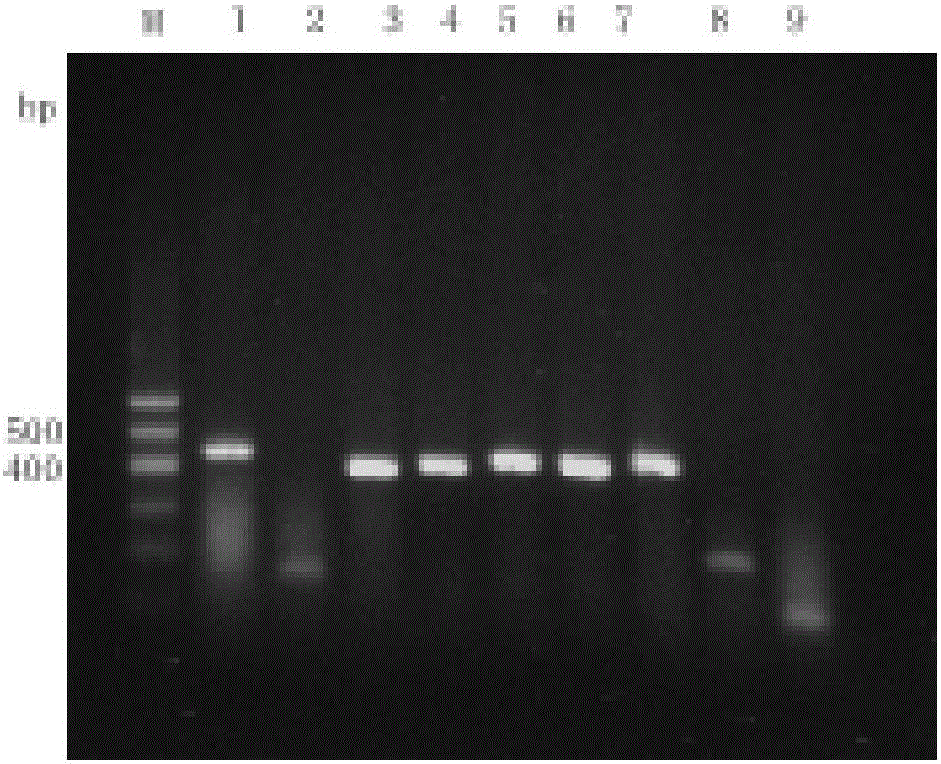Lactobacillus plantarum SWUN5815 for high-yield bacteriocin and application of lactobacillus plantarum SWUN5815
A technology of Lactobacillus plantarum and Lactobacillus plantarum, applied in the field of microorganisms, can solve the problems such as narrow bacteriostatic spectrum, lactic acid bacteria cannot adapt to the geographical environment of the Qinghai-Tibet Plateau, and cannot be applied to yaks, etc.
- Summary
- Abstract
- Description
- Claims
- Application Information
AI Technical Summary
Problems solved by technology
Method used
Image
Examples
Embodiment 1
[0029] The isolation and identification of embodiment 1 bacteria
[0030] 1. Isolation of bacteria
[0031] Weigh 2g of fresh yak feces sample and 20ml of sterile water, shake and mix evenly, and dilute them in 10-fold series. Take different dilutions respectively under aseptic conditions, and pour them in MRS (containing 0.5% calcium carbonate) medium in a plate. plate, cultured at 37°C for 48h. Pick individual colonies with calcium-dissolving circles and different shapes for Gram staining, select Gram-positive bacteria, inoculate them in MRS liquid medium, and cultivate them at 37°C. Number the lactic acid bacteria obtained after screening and put them on MRS solid medium Draw a line for purification and save for later use;
[0032] 33 strains of lactic acid bacteria were screened from 90 strains of lactic acid bacteria by the Oxford cup method, which had obvious inhibitory effects on the indicator strains. After excluding the influence of acid, there were still 9 strains ...
Embodiment 2
[0042] The antibacterial activity of embodiment 2 thalline
[0043] 1. Preparation of Lactobacillus plantarum MRS fermentation supernatant:
[0044] Inoculate the preservation solution in the cryopreservation tube into 5mL MRS liquid medium, shake and mix well, incubate at a constant temperature of 37°C for 24 hours, continuously activate three generations with 2% inoculum size, and take the third generation fermentation liquid and centrifuge at 4000×g After 10 minutes, take the supernatant, filter the supernatant through a 0.22 μm micro-membrane, store in a -20°C refrigerator for later use, and prepare the Lactobacillus plantarum MRS fermentation supernatant.
[0045] 2. Exclusion of acid inhibition
[0046] The inhibitory effect of Lactobacillus plantarum MRS fermentation supernatant on indicator bacteria may be due to the effect of acidic products secreted by lactic acid bacteria such as acetic acid and lactic acid. In order to remove the interference of acidic substances...
Embodiment 3
[0053] Embodiment 3 antibacterial spectrum is measured
[0054] Table 1 Antibacterial spectrum of bacteriocin produced by SWUN5815
[0055]
[0056] Note: Diameter of antibacterial zone (mm): +++, 19-24; ++, 15-18; +, 10-15; -, no antibacterial effect.
[0057] Common yak-derived diarrhea-causing enteric pathogens, Salmonella enteritidis, Salmonella typhimurium, Salmonella dublin, and Escherichia coli Shigagenes, were selected as indicator bacteria, and the cell-free fermentation supernatant was used to conduct the Oxford cup antibacterial test.
[0058] The results of the antibacterial spectrum of SWUN5815 bacteriocin are shown in Table 1. It can be seen from the table that the bacteriocin produced by SWUN5815 has broad-spectrum antibacterial activity, and its pathogenic indicator bacteria were all isolated from yaks. In addition to having a good inhibitory effect on the indicator bacteria used in this study, it also has a good inhibitory effect on some common pathogenic...
PUM
 Login to View More
Login to View More Abstract
Description
Claims
Application Information
 Login to View More
Login to View More - R&D
- Intellectual Property
- Life Sciences
- Materials
- Tech Scout
- Unparalleled Data Quality
- Higher Quality Content
- 60% Fewer Hallucinations
Browse by: Latest US Patents, China's latest patents, Technical Efficacy Thesaurus, Application Domain, Technology Topic, Popular Technical Reports.
© 2025 PatSnap. All rights reserved.Legal|Privacy policy|Modern Slavery Act Transparency Statement|Sitemap|About US| Contact US: help@patsnap.com



